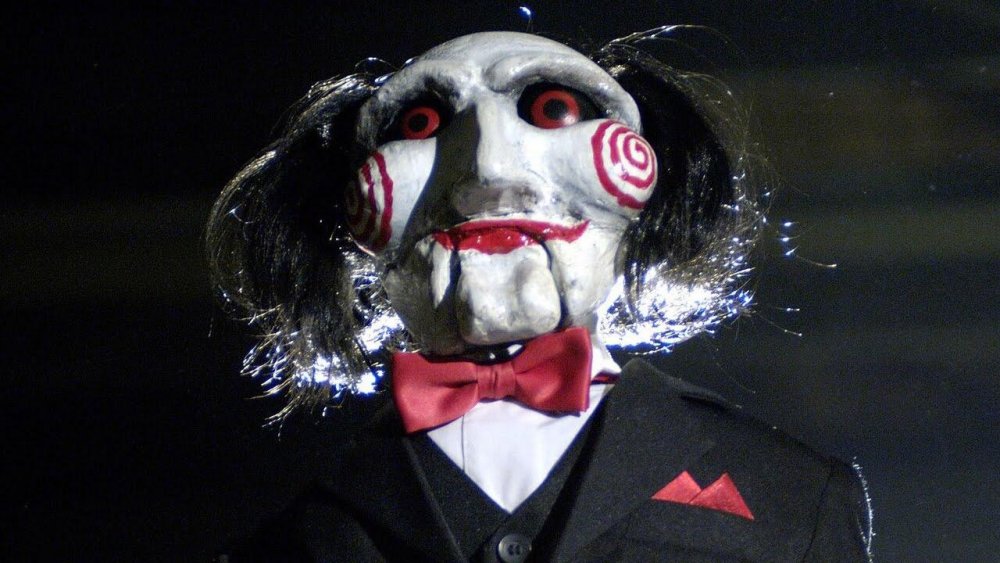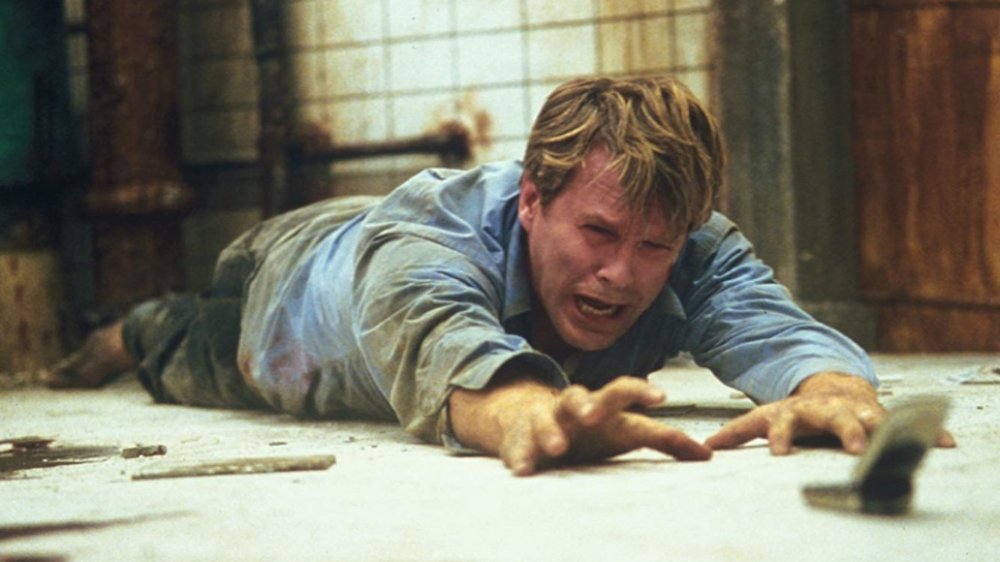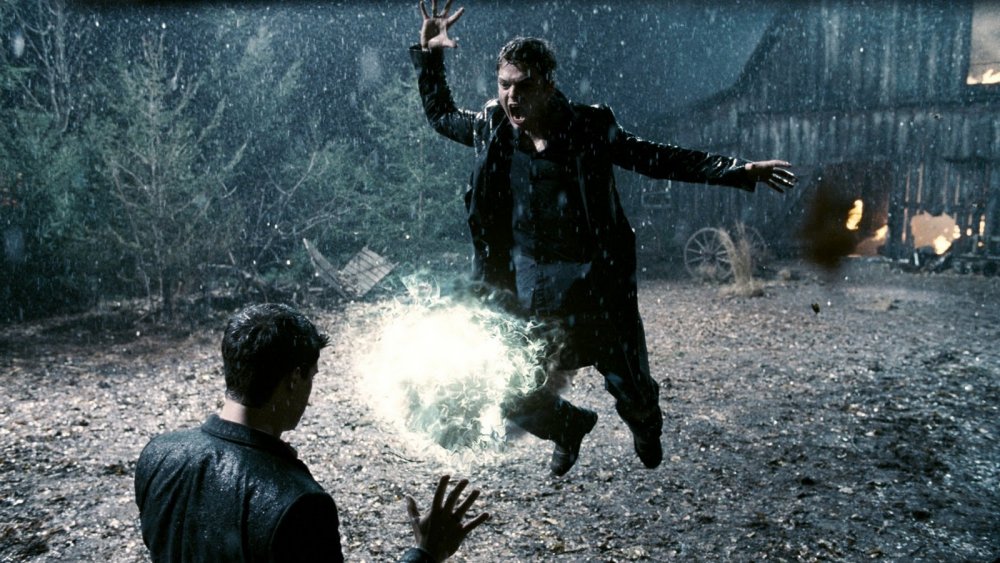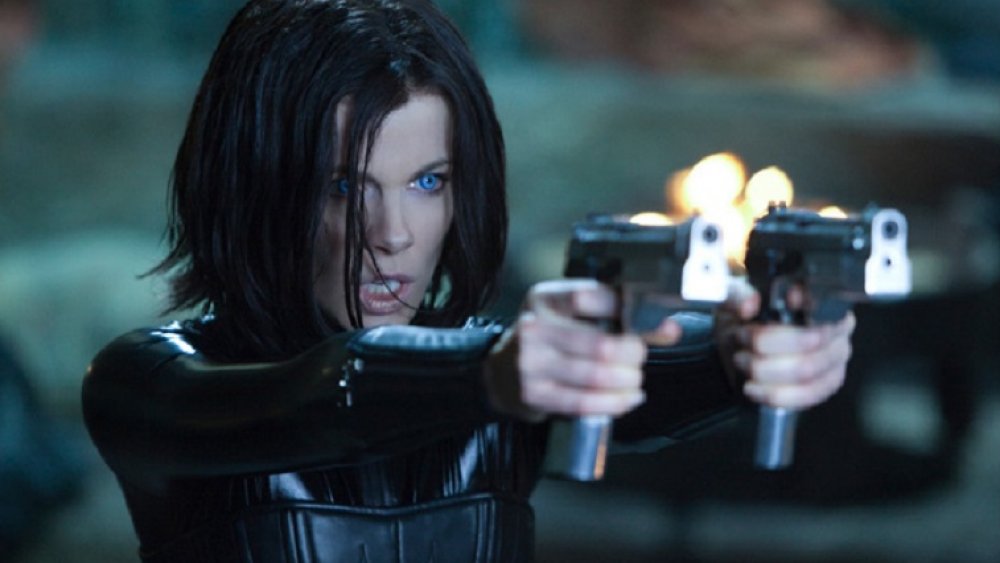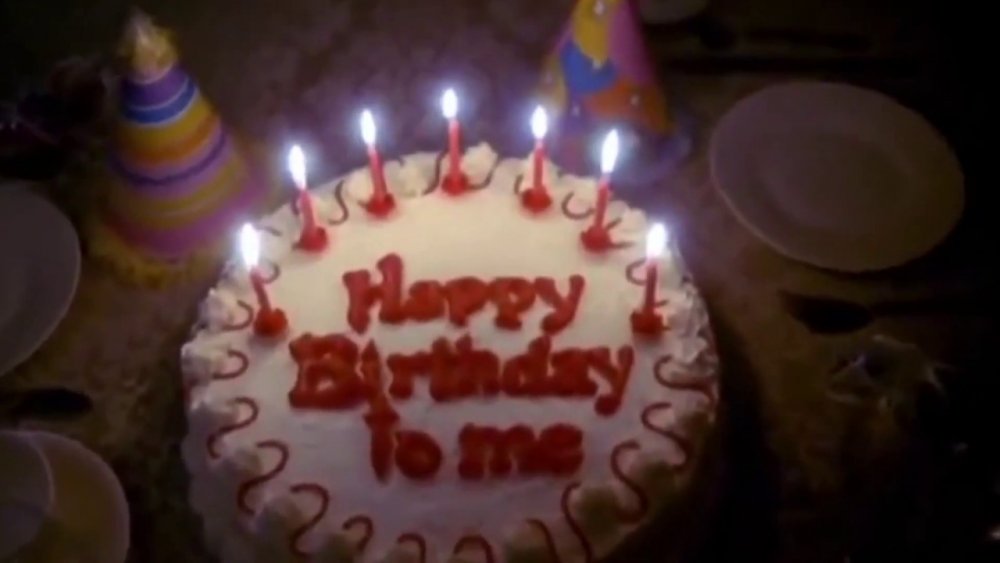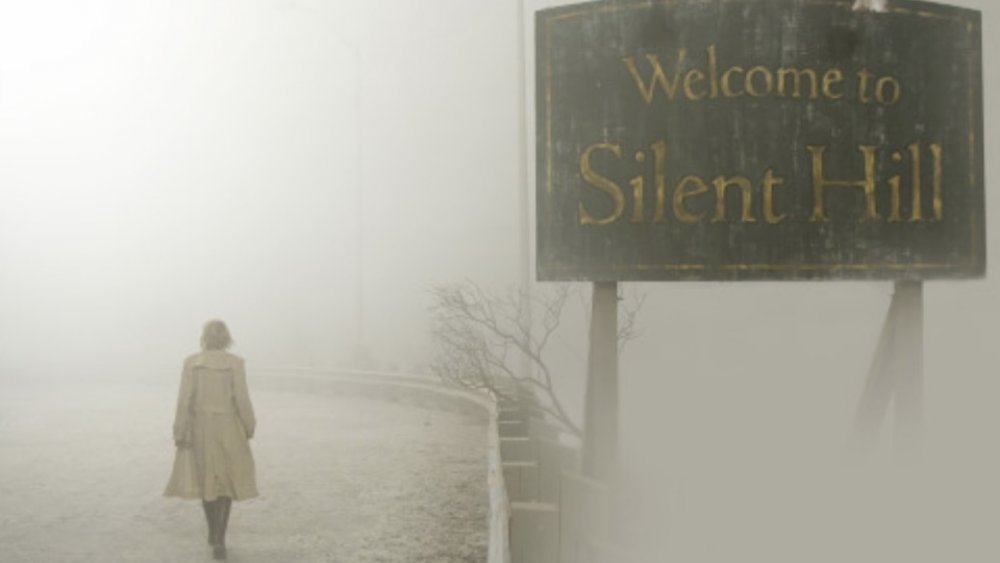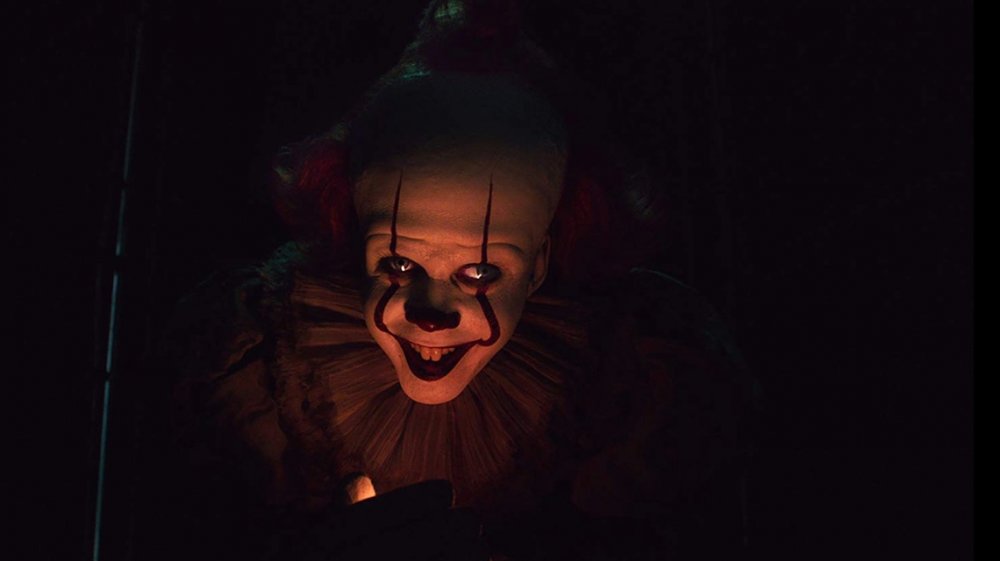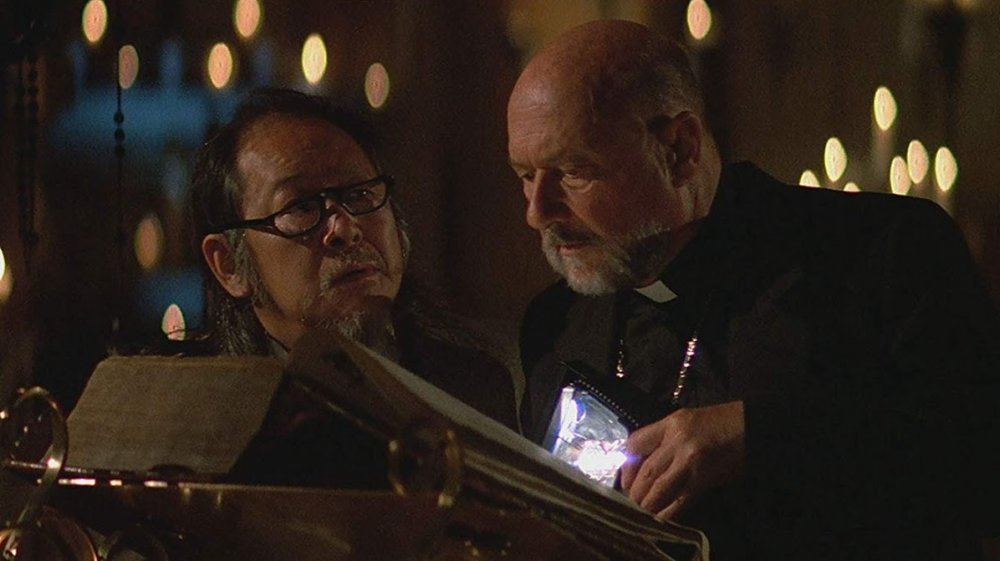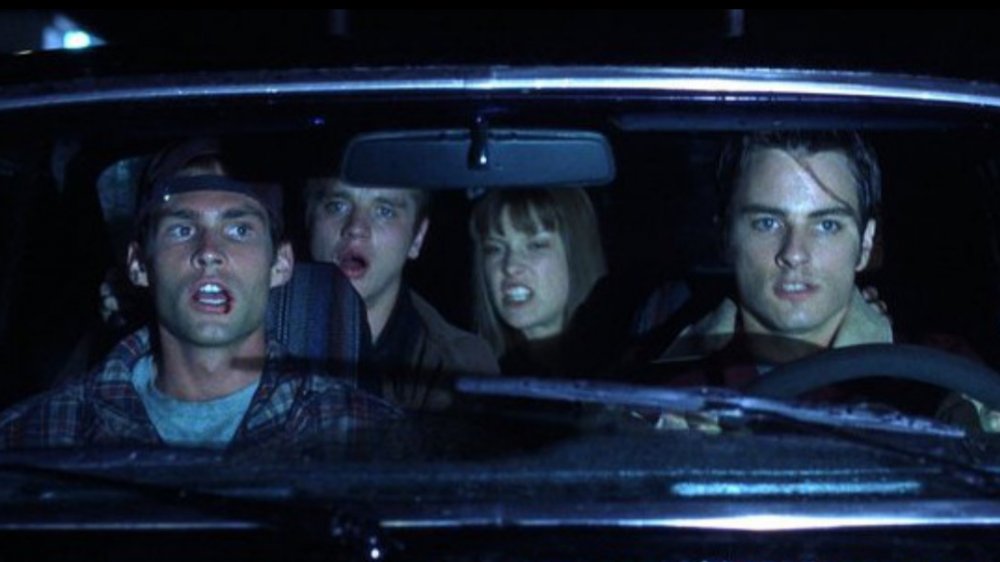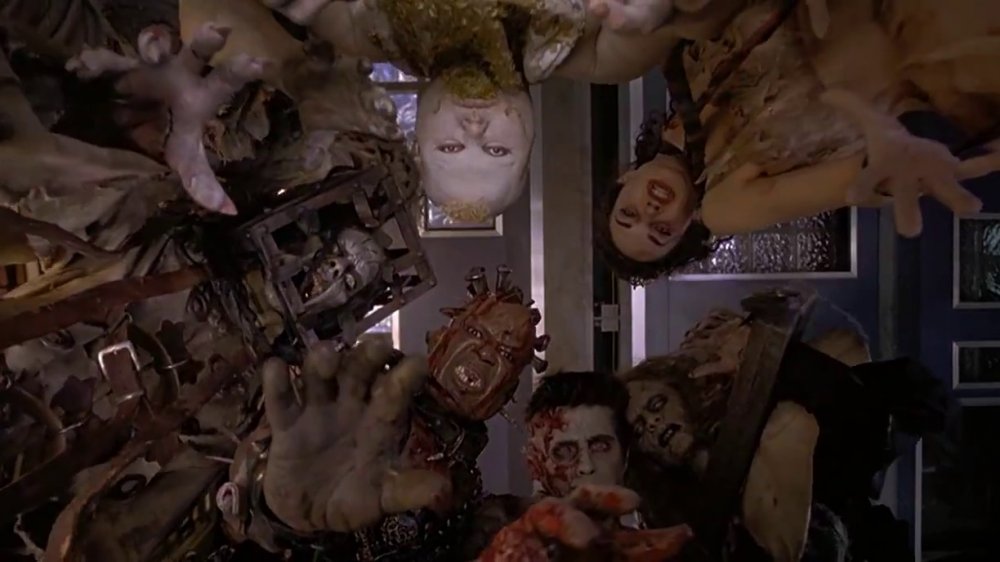Horror Movies Audiences Loved That Critics Hated
Moviegoers and film critics don't always see eye to eye. If that weren't the case, Michael Bay would be out of a job, while Paul Thomas Anderson would be getting $200 million budgets. This gap between what moviegoers and film critics like is especially huge when it comes to horror films. As a general rule, the horror genre doesn't get a ton of respect from the critical establishment, and it doesn't get a lot of love come awards season, either. Only six horror movies have ever been nominated for Best Picture, and only one, The Silence of the Lambs, has ever won. What gives?
Well, there are many reasons, but let's be honest, a lot of horror movies aren't just bad, they're scary bad. However, while some horror films were hated by the critics, and even bombed at the box office for that matter, they have still managed to build devoted fan bases. What are these horror flicks, and what makes them so popular? From cult classics to mainstream hits, here are the horror movies that audiences loved and critics hated.
Critics did not want to play Jigsaw's game
What Halloween is to slasher flicks, Saw is to torture porn. Alongside Eli Roth's 2005 Hostel, the original 2004 Saw is credited with launching the "torture porn" horror sub-genre, in which audiences are meant to take glee in characters meeting a gory demise. In the film, a serial killer named Jigsaw kidnaps people and forces them to play elaborate, homicidal games to prove how much they want to live. And these game ain't Settlers of Catan or Twister, either.
Saw is an interesting and unsettling concept, but critics weren't impressed, giving the film a brutal 49 percent on Rotten Tomatoes. The critical consensus on Saw was that the film "ensnares audiences with a deceptively clever plot and a myriad of memorable, nasty set pieces, but its lofty ambitions are undercut by a nihilistic streak that feels more mean than profound." However, critics couldn't kill Saw, and the franchise became a Halloween tradition for several films, before taking a hiatus and returning with 2017's underwhelming Jigsaw. Still, there's no denying that audiences enjoyed the franchise's gory traps and diabolical kills for quite some time.
Critics treated Resident Evil like the plague
While Paul Thomas Anderson is a critical darling, the similarly named Paul W.S. Anderson is most certainly not. He is, however, the creative driving force behind the most successful video game-based franchise in film history, Resident Evil. So that counts for something right? Anderson wrote and directed the 2002 original, which earned an abysmal 35 percent rating on Rotten Tomatoes. Anderson only produced the next two, but he returned to the director's chair for the final three Resident Evil films.
However, no matter who was behind the camera on the Resident Evil films, none of them ever broke 40 percent on Rotten Tomatoes. But that doesn't matter when your franchise has earned as much as this one has. While the series' $271 million domestic total may not seem that impressive, remember that compared to most other blockbusters, each film was cheap to produce and extremely successful overseas (bringing in a worldwide total of over $1.2 billion).
Simply put, Resident Evil has been the best bargain in horror movies. For example, consider Resident Evil: The Final Chapter. The $40 million film bombed stateside with only $26 million, but it made $312 million worldwide. And with that kind of love from audiences, critics never stood a chance against this monstrous beast.
The Covenant has built a cult of fans
In 2006's The Covenant, four young men who are part of a supernatural cult in New England must battle against an evil force that was thought to have died out long ago. So basically, it's a PG-13 rated version of Hocus Pocus or one of hundreds of CW shows. The scariest part of the film? Its Rotten Tomatoes critics score. Are you ready for this? It's 4 percent. Yes, only 4 percent of critics liked it, and even those came with caveats. Some choice reviews from top critics include, "Terribly acted, shamelessly unoriginal and executed with little redeeming sense of humor," and, "Cobbled-together teenybopper tripe about feuding male witches with nothing to offer but classic bad dialogue." Ouch.
The Covenant didn't do well at the box office either, mustering a bleak $37.5 million worldwide. While the film was a bust with critics and bombed with moviegoers, it has had a bit of a resurgence in the decade and a half since it was first released. Granted, those who like it only like it in an ironic, tongue-in-cheek way, but hey, ironic love is better than no love at all. While The Covenant may not qualify as a "cult classic," it has certainly built a cult of fans, who mostly like to marvel at the dreamy, "before they were famous" leads: Sebastian Stan, Chace Crawford and Taylor Kitsch. So you could say The Covenant is basically a supernatural version of The Outsiders.
Vampires vs. Werewolves vs. Critics
The key to success in the film business, or any business really, is to find a niche. In the case of Underworld, that niche was vampires with guns versus werewolves with guns. We could explain the plot, but really, that's all there is to it, (plus a Romeo and Juliet romance subplot thrown in for good measure). Underworld came out in 2003, the same year The Matrix franchise "ended" with The Matrix Reloaded and The Matrix Revolutions. And you can definitely see the similarities, as the film's tone and style feels like The Matrix ... albeit with vampires and werewolves, oh my!
Underworld mustered an anemic 31 percent on Rotten Tomatoes score, but earned $95 million worldwide on a $22 million budget, more than enough to launch a franchise. None of the five Underworld films ever broke even 35 percent on Rotten Tomatoes, but that doesn't matter when your movies are cheap to make and can make bank. However, the latest film in the franchise, Underworld: Blood Wars, came and went in 2017, earning only $81 million worldwide on a $35 million budget. Still, there's an audience out there for stylized, supernatural action, so it's no wonder the series has overall been such a monstrous success with horror fans.
Critics killed this lesser-known 1980s slasher flick
In the wake of Halloween and Friday the 13th, slasher flicks were big business at the box office throughout the 1980s and into the 1990s. And after Michael and Jason, but before Freddy, there was Happy Birthday to Me in 1981. By the early 1980s, the slasher flick's rules had already been well established, as had the theme of tying a murderous rampage in with a holiday or special event. As the name implies, Happy Birthday to Me is about a series of brutal murders centered around a popular teenager's birthday. The film underwhelmed at the box office, earning only a mediocre $10 million. It wasn't popular with critics, either, and it still isn't, with only a 27 percent Rotten Tomato score.
However, while the film failed commercially and critically, it has since earned a bit of a cult status. Happy Birthday to Me helped established a lot of the genre's rules (aka cliches), while at the same time displaying level a wit and self-recognition that wasn't typical of slasher flicks at the time. Does Happy Birthday to Me belong in the same hallowed ranks as Halloween, Friday The 13th, and A Nightmare on Elm Street? Probably not, but it's definitely worth a watch for gore-hounds and slasher flick fans.
Silent Hill is big with fans of the video game
Perhaps the only movie genre that's more critically reviled than horror films are films based on video games. Silent Hill occupies the not-so-sweet spot of being both a horror movie and a film based on a video game. Not surprisingly then, critics hated it, only giving the 2006 film a 30 percent ranking on Rotten Tomatoes. The film's box office performance wasn't great either, as it earned just under $100 million at the worldwide box office on a $50 million budget. You'd think that would be enough to kill the franchise, but there was a sequel in 2012 that did even worse, though it's noteworthy for featuring a young Kit Harrington, just after Game of Thrones had debuted on HBO, but before the series became a cultural monolith.
While based on a video game, the plot to Silent Hill seems like a million other horror movies before it. A woman goes searching for her adopted daughter in a strange, desolate town where spookiness ensues. Because Silent Hill was so loyal to its video game source material, the film has its supporters in the gaming world, especially among fans of the game. It has also been appreciated for its creepy mood and atmosphere, as well as the chilling score. While none of these separate spooky parts were able to come together into a truly frightening whole, Silent Hill is still worth a watch.
It: Chapter 2 was a big(ger) hit with fans of Stephen King's book
The first It shocked the world when it debuted in 2017, earning the biggest opening-weekend ever for an R-rated horror film. The film would rake in a total of $700 million worldwide, and It was also a hit with critics, earning an 86 percent fresh rating on Rotten Tomatoes. That critical and commercial success is a high mountain for any sequel to climb, and It Chapter Two fell short, earning a 63 percent Rotten Tomatoes score and less than $500 million worldwide. That's still great numbers on both accounts, but it's a far cry from its predecessor.
However, while critics and mainstream moviegoers may have been less enthusiastic about It: Chapter II than the first film, the adaptation really resonated with fans of Stephen King's original book. While some critics felt the three-hour film was too long, the book's fans had already committed to the novel's massive 1,100+ pages and didn't mind sitting in a theater for three hours. Some critics also weren't crazy about the wisecracks and insults the Losers' Club lobbed at each other, but the crew's brazen banter was a key part of the book's charm. Some critics also didn't even seem to realize the film is an exploration of childhood trauma through the lens of supernatural horror. Put simply, It Chapter Two was a film made for the fans, and by all accounts, they loved it.
Modern horror audiences worship John Carpenter's forgotten classic
Prince of Darkness is the second film in John Carpenter's Apocalypse Trilogy. Starting with his remake of The Thing in 1981 and ending with his Lovecraftian homage In The Mouth of Madness in 1994, these three films aren't united by storyline but by theme. Prince of Darkness lands in the middle, coming out in 1987. And this film is ... something else. Describing its complicated, multi-faceted plot is difficult, but basically, a group of researchers discovers a mysterious cylinder that, if opened, could mean the end of the world. There's a lot more to it, but it's best that you discover it for yourself.
Critics weren't pleased with Prince of Darkness, and today, it has a meek 58 percent Rotten Tomatoes rating, with the consensus on the site reading, "Prince of Darkness has a handful of chillingly clever ideas, but they aren't enough to put John Carpenter's return to horror at the same level as his classic earlier outings." The film earned a dreadful $14 million at the box office, and it seemed destined for the dustbin of cinema history. However, you just can't keep a good cosmic horror down. The film is earning new fans three decades after its release, and they're discovering Prince of Darkness is a majorly underrated horror masterpiece. Prince of Darkness isn't just "worth a watch" — it's "must watch."
Critics couldn't kill Final Destination
Most horror films have a murderous villain ... but what if the villain was death itself? This was the premise behind the Final Destination franchise, which launched in 2000 and produced five films. The characters weren't dying of natural causes (that would be more depressing than scary) but from increasingly outlandish, gory deaths that were almost comical in their ridiculousness. In some ways, Final Destination was a bridge between slasher flicks and torture porn, as the appeal was no longer the charismatic villain (Michael Myers, Freddy, Jason) but the outrageousness of the deaths themselves.
Critics weren't impressed with Final Destination, giving it only a 34 percent rating on Rotten Tomatoes. The rest of the series hasn't fared any better, never breaking 50 percent on Rotten Tomatoes. However, horror fans loved Final Destination, as it made $112 million worldwide on a $23 million budget, launching a franchise that has produced killer returns. The financial high watermark was the fourth film, The Final Destination, which made $186 million worldwide in 2009. Final wasn't actually the final film, however, as 2011's Final Destination 5 (for some reason the producers didn't like the number 4) made $156 million worldwide on a $40 million budget. While critics didn't see the charm, audiences couldn't get enough of the complicated kills that got crazier and crazier with each film.
Thir13en Ghosts has definitely found its audience
Remember Thirteen Ghosts? Sorry, we mean Thir13en Ghosts. (How do you even pronounce that?) The film was part of the resurgence in supernatural horror in the late 1990s and early 2000s following the, well, supernatural success of The Sixth Sense and The Blair Witch Project. Alas, the ghost genre is about all that Thir13en Ghosts has in common with those films, as it earned a ghastly 15 percent on Rotten Tomatoes. It didn't fare any better at the box office either, earning $68 million worldwide on a $42 million budget.
One would think with numbers like that, Thir13en Ghosts would be buried way deeper than six feet under, and that it would've been condemned to horror movie oblivion. However, the movie does have its admirers, or at least people who appreciate its fresh take on the haunted house genre. There's even a Reddit thread where horror movie fans express their support of the film and are calling for it to be remade. For what its worth, Thir13en Ghosts already was a remake of the much easier to pronounce 13 Ghosts from 1960. Basically, the growing consensus online is that the film had a solid premise but weak execution. Still, the movie has enough going for it that a lot of horror fans keep watching it again and again, despite its scary Rotten Tomatoes rating.
